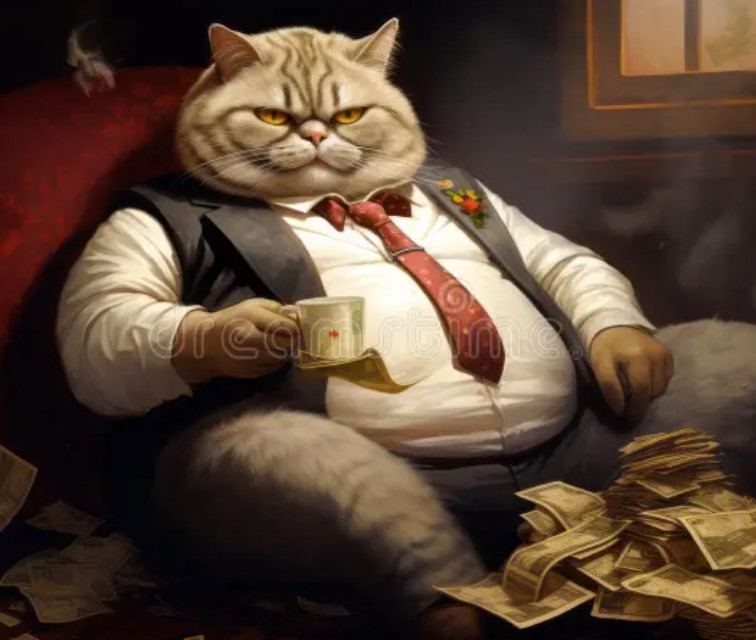Alright folks, it’s March! Are we ready for 2020 to be over yet? I most certainly am. Are you desperately waiting to hear the sweet guitar intro to Here Comes the Sun on the radio – always my first indication that we are finally emerging from the depths of winter and the only song 100% guaranteed to put a smile on my face?
It’s been a long, cold, lonely winter folks, but I think we may just make it through. Days are longer, smiles are returning, all that stuff. As they say, we all know it’s darkest before the spring – isn’t that it? Side note – did you just try to parse Here Comes the Sun into 20 second bits so you could sing it and know you are washing your hands for the appropriate amount of time? I thought so. I did too.
OK, maudlin stuff out of the way. As you may have gathered from last week’s meandering take on hiking, I am most definitely not fully ready to get back into the energy rant world. There is a lot of “stuff” going on and probably every topic deserves its own blog. But since I haven’t really turned my mind to any of them in appropriate substance, there is no depth to my analysis, at least not in any way that is satisfactory to me.
So as a result and heretofore and herewith are the top 5 things I didn’t really think about while I was away that seem sort of topical now (tongue in cheek obviously).
Coronavirus
Obviously number 1 with a bullet on everyone’s mind. The Coronavirus, or COVID-19, is the story of early 2020 and is likely to be for the remainder of the year. From its humble beginnings as a unique virus of uncertain origin (bats, soup, bat soup, snakes, whatever) that was happening “over there”, the rapidly spreading virus now rivals Donald Trump for media attention since, as we have learned on countless other occasions, there is nothing the media loves more than a good horror story, and if we can include zombie deaths, all the better.
Look, don’t get me wrong, my heart goes out to the families and people affected by Coronavirus cases and those who have lost loved ones to this disease, but it is hard to not feel that lost in all the discussion of pandemic is a sense of perspective.
Part of this stems from all the uncertainty and lack of accurate reporting. It is getting better now, but elected officials across the globe have been slow to come around to the seriousness of both the virus and, just as importantly, the general reaction to it. What people need to see is elected officials taking confident control of the situation and implementing rational reasoned responses to the challenge. If you’re too flip about it, the populace’s guard is down a larger constituency will get infected and the transmission will escalate, if you overreact and panic the people will either feed off of you or tune out. It’s a delicate balance and we are lacking in delicacy in our leaders these days I am sorry to say.
The poster child for this of course is Donald Trump. His messaging of “all is well” and “this will disappear or maybe it won’t” and “go to work” is not the steady hand on the wheel that people want and it is easy to see through this rhetoric as being driven by his own self-interest. Donald Trump needs to downplay this crisis as much as possible lest it affect his re-election prospects. The political calculus is that in all likelihood this will have run its course in the United States by the November election, so wouldn’t it be better if we found a way to sweep the actual numbers under the rug in the Oval Office and maybe demonize foreigners along the way to whip up the base? It is hard not to interpret the White House response any differently. (note – this is not the case for front line health workers and major governmental organizations in the US – they are doing great and underappreciated work, hopefully the media will pick up on it).
Contrast this official response with Italy, where the health system was mobilized almost in tandem with the outbreak and infection numbers are so high because they are literally testing at will. But the main point is it’s transparent. And the population isn’t panicking. There are no toilet paper shortages in Rome.
Having gone through virus scares from H1N1 to Swine Flu to Ebola, not to mention Y2K and late 1980’s new wave music, it is easy to be jaded to esoteric danger, but we made it through all of these. Comparisons to the 1918 flu epidemic are not helpful – the world in 2020 is fundamentally different.
Like the preceding, this too will pass. It’s not an extinction event even if CNN or Infowars says it is.
Wash your hands. Stay home if you are sick. Follow the direction of credible authorities. Have compassion for those who catch the virus, especially those who are immuno-compromised, elderly or have pre-existing conditions. Stop emptying the shelves at Costco and buying all the hand sanitizer and masks from health care wholesalers – all you are doing is selfishly stressing the supply chain and taking supplies away from those who need it.
The price of oil and OPEC
Well this one is surely topical given the giant sell-off we had today when the OPEC + meeting fell apart without any agreement on whether to cut production further from the targets already set. The market was really counting on OPEC coming through with some pretty aggressive cuts, up to 1.5 million barrels per day and was “displeased” when that did not come to pass.
Since the coronavirus first came to prominence in early 2020, the price of oil has shed about $15 or close to 30%. The reasons for this are many – quarantines in China and the shutdown in industrial production, the anticipated reduction in consumption from reduced flights as countries close of direct access to certain other countries, the ripple effect of reduced economic activity and disrupted supply chains across the world as the virus spreads and, of course, the increased risk of a global recession snatched out of the jaws of recovering growth and optimism after the US-China trade deal.
So why didn’t OPEC+ cut? Word is the Russians were tired of cutting. OPEC+ has indeed cut back significantly in the last few years and inside that group, Saudi Arabia has cut back even more. Current OPEC production is at the lowest it has been since the credit crisis.
So a realistic question is, does OPEC actually need to cut? They have already cut so much and Libya is basically shut in – close to 1 million barrels of oil per day. Notwithstanding the claims that this is the single largest demand shock to the oil market since 2009 (and maybe it is), the market had priced that in and all evidence suggests that the Chinese market is ramping back up – the crisis may indeed have already passed. If that’s the case, a giant cut in output maybe isn’t the best idea – unless there is some basis for panic selling on a Friday.
My own thought was a small cut, say 600,000 boepd, with the potential for more in reserve was probably wisest as a market signal, but I wasn’t in the room. I don’t have the data. No one really does.
And here’s a contrarian question – if we are indeed heading into a coronavirus recession, do we really want to start by jacking up energy prices by locking in hard to reverse production cuts or are we not better off letting things play out with the stimulative effect of cheap gas and aviation fuel etc. to get the wheels of commerce moving again?
Central banks didn’t cut rates because they felt rates were too high. They cut them because they wanted to put liquidity into the system. This is the same thing – cheap energy is the fastest route to the consumer pocketbook there is.
Look, the chances of OPEC thinking this through in that type of rational way are slim to none, but you can’t argue with the effect. I know it sucks for my portfolio and the few energy companies I have left (look, I know OK?) and certain governments banking on a $58 handle for their budget year, but this is the market reality we live with. It is more likely this is a short-term crater than a market reset.
Plus there is the added bonus for OPEC that prices in the $40’s pummel shale a bit longer while they are down. Which of course brings me to…
Shale Oil
I have a few emerging thoughts on shale/tight oil. Not fully formed, but they are there. Perhaps to be elaborated on in a late blog.
I was looking at some data put out by one of the sources I love and came across the following nugget.
The United States produces about 7.5 million barrels of oil per day from its tight oil basins, which is indeed amazing. Want to know something even more amazing? 3.8 million barrels of that – more than half – is being produced from wells that came online in 2019. That’s right. Put another way, the US shale companies spent the better part of 9 years drilling the snot out of tight oil plays and if they stopped drilling for six months they would set themselves back five years in terms of production. That is the very definition of hamster wheel. With the capital markets dried up and the world in the grips of coronavirus fears, this may be a reason why OPEC + was OK with not cutting back production this time, a level of confidence that 2020 is the year that the tight oil world would also contribute to supply management, if only through attrition.
Thinking about those numbers a bit, I am reminded of an analogy I heard (albeit for a different reason). High decline tight oil is like farming. You start the year with high hopes, you take a bet on a commodity, you plant your crop and by the time the harvest comes around, you either called it right and your product is in demand or the market’s gone to hell and you’re broke. No one wants to give you money or bail you out, your shipping is blocked or too expensive. The problem with shale is that it was sold to the market as tech – high growth, high return, but now the investors find they have a bumper crop of soybeans that their biggest market no longer wants.
I don’t wish hardship on US producers, but… this is actually bullish for cash rich Canadian companies -eventually, if there’s a pipeline, but that’s for next week or month.
The US election
I have tried not to think too much about this or dwell too much on it because it will just make you insane, but some comments about the aftermath of Super Tuesday.
First, I am disappointed to see Elizabet Warren drop out. I am not necessarily enamoured of her policy positions on a lot of matters and she made some serious campaign missteps, but she was the last remaining serious woman candidate and it pains me that we (and my girls) will need to wait at least another four years to see a woman rise to highest office in the United States or Canada.
Instead we are stuck with a collection 70 year old, folically challenged white guys when I thought we were done with those days. The current choice is going to be between the crazy angry uncle with the spray tan who talks about himself all the time and either the kindly forgetful uncle who hugs you too long and smells like mothballs or the crazier uncle who waves his hands around arguing at dinner, spills the gravy, slips you a fiver when no one is looking and tells you go buy some jerky.
My expectation is that Joe Biden is probably uncatchable right now unless he has a “we love you Cleveland” moment. Bernie was unable to deliver an expanded youth voter base anywhere except California and the Joementum is inescapable. I fully expect the nomination to be wrapped up before the convention if Joe wins Michigan and Florida and also expect that his running mate will be a woman – if not Kamala Harris, then someone with her gender and minority chops.
Hopefully this all happens soon so we can catch our breath a bit before the election season begins in earnest.
But don’t count on it!
The stock market
I had a long and productive discussion with my investment advisor today and we agree that what is going on the market in response to the coronavirus is unprecedented, unsettling and unhinged.
Daily gyrations of 1-3% are just not regular and they underpin what I said earlier about the fear, uncertainty and lack of clarity.
Low information people do crazy things. But inside of the gut wrenching ups and downs, certain stores of value are starting to reveal themselves (not energy, sorry) and if you can stomach the volatility and see a way through, at some point there will be bargains worth picking up (not energy yet, sorry).
People who are panic selling and buying right now remind me of the toilet paper hoarders running amok in Costco. They are doing it because they feel they have to, no one has told them they don’t need to and they think they are somehow smarter than everyone else and can maybe make a quick buck – like the dude trying to sell Charmin for $50 on Kijiji. They are also invariably disappointed.
Stay the course, be smart. Be in the market in good companies and you will prevail. Stop trying to time the unpredictable and leave me some toilet paper.
And wash your damn hands.
Prices as at March 6, 2020
- Oil prices
- Oil storage is down
- Production flat for the week
- Natural Gas
- Storage below last week, but historically very high; consumption down; production flat; exports increased; production flat; consumption down.
- WTI Crude: $41.43 ($45.17)
- Western Canada Select: $27.53 ($31.23)
- AECO Spot: $1.73 ($2.00)
- NYMEX Gas: $1.722 ($1.704)
- US/Canadian Dollar: $0.7449 ($0.7449)
Highlights
- As at March 4, 2020, US crude oil supplies were at 444.1 million barrels, an increase of 0.8 million barrels from the previous week and a decrease of 8.8 million barrels from last year.
- The number of days oil supply in storage is 27.8 which is 0.8 below last year at this time.
- Production was flat for the week at 13.100 million barrels per day. Production last year at the same time was 12.100 million barrels per day.
- Imports increased to 6.238 million barrels from 6. 217 million barrels per day compared to 7.001 million barrels per day last year.
- Crude exports from the US increased to 4.154 million barrels per day from 3.657 million barrels per day last week compared to 2.803 million barrels per day a year ago
- Canadian exports to the US increased to 3.644 million barrels a day from 3.603 million barrels per day last week
- Refinery inputs decreased during the week to 15.696 million barrels per day
- As at March 4, 2020, US natural gas in storage was 2,091 billion cubic feet (Bcf), which is 9% above the 5-year average and about 48% higher than last year’s level, following an implied net withdrawal of 106 Bcf during the report week
- Overall U.S. natural gas consumption fell by 8% during the report week.
- Production was essentially flat for the week. Imports from Canada fell 11% from the week before. Exports to Mexico increased 3% week over week.
- LNG exports totaled 53 Bcf
- As of March 6, 2020, the onshore Canadian rig count decreased 37 to 200 (AB – 139; BC – 15; SK – 43; MB – 3; Other – 0). Rig count for the same period last year was 189.
- US Onshore Oil rig count at March 6, 2020 is at 682, up 4 from the week prior.
- Peak rig count was October 10, 2014 at 1,609
- Natural gas rigs drilling in the United States is down 1 at 109.
- Peak rig count before the downturn was November 11, 2014 at 356 (note the actual peak gas rig count was 1,606 on August 29, 2008)
- Offshore rig count was flat at 22.
- Offshore peak rig count at January 1, 2015 was 55
US split of Oil vs Gas rigs is 86%/14%, in Canada the split is 66%/34%
Trump Watch: Coronavirus denial
Kenney Watch (new!): Budget denial
Trudeau Watch (for balance): Blockade Denial









